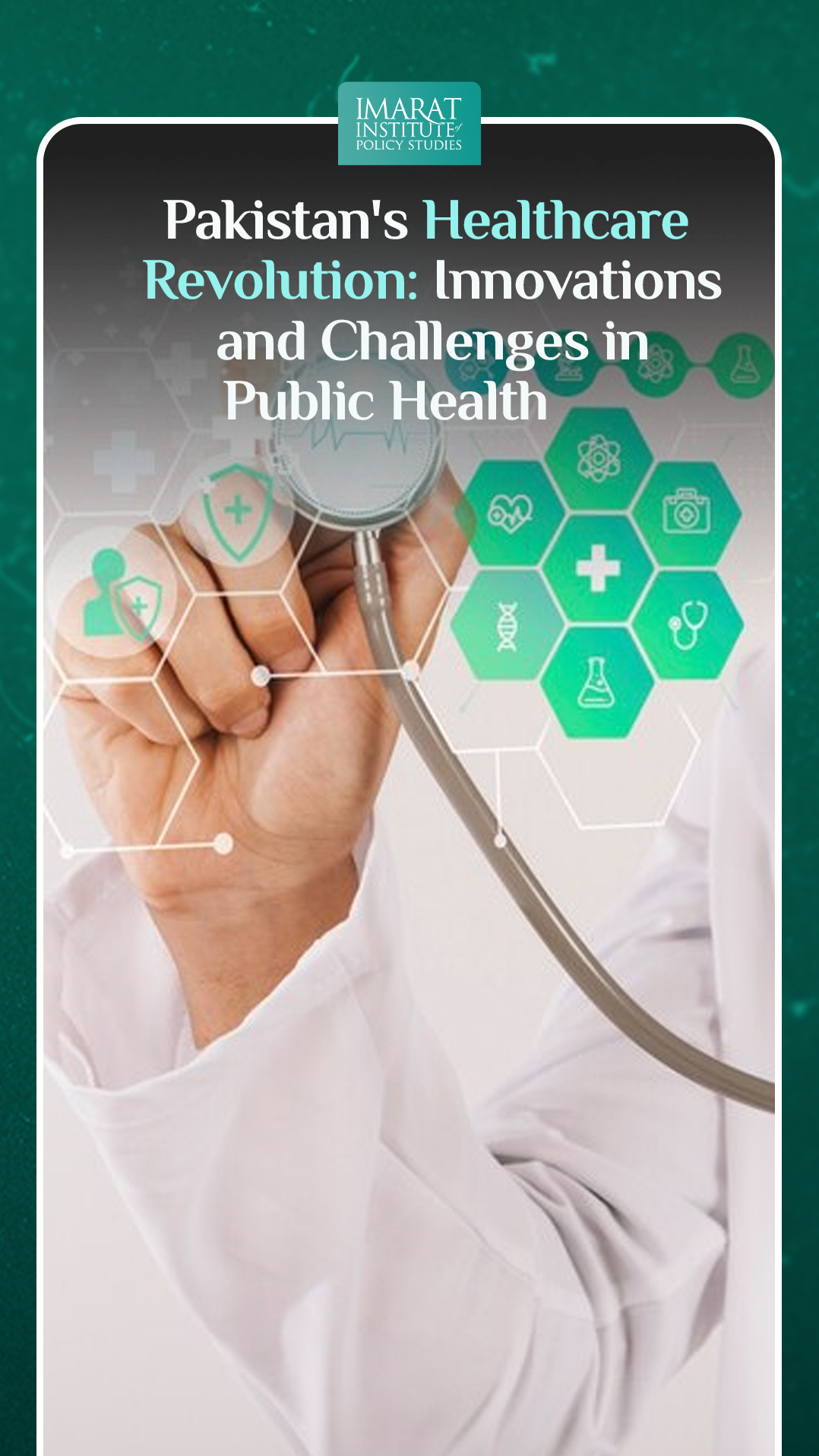Introduction
Pakistan, a country with a population exceeding 220 million, has been striving to improve its healthcare infrastructure and services to meet the diverse needs of its citizens. Over the years, Pakistan has witnessed significant advancements and innovations in public health, aiming to address healthcare disparities, improve access to essential services, and enhance overall health outcomes. In this blog, we will explore Pakistan’s healthcare revolution, highlighting key innovations, challenges, and the path forward towards a healthier nation.
Healthcare Innovations
Pakistan’s healthcare landscape has been shaped by innovative approaches and initiatives aimed at improving healthcare delivery, disease prevention, and health promotion.
Telemedicine
Telemedicine has emerged as a game-changer in Pakistan’s healthcare sector, especially in remote and underserved areas. Through teleconsultations, patients can access medical advice, diagnosis, and treatment remotely, bridging the gap between healthcare providers and patients in distant locations. Initiatives like Sehat Kahani and doctHERs have leveraged technology to connect patients with qualified healthcare professionals, expanding access to quality healthcare services.
Mobile Health (mHealth) Solutions
The widespread use of mobile phones in Pakistan has paved the way for innovative mHealth solutions aimed at improving health awareness, disease management, and healthcare access. Mobile apps and SMS-based platforms offer valuable resources for health education, appointment reminders, medication adherence, and emergency response. Projects like mTIBA and Aman TeleHealth have utilized mHealth technologies to empower individuals to take charge of their health and well-being.
Lady Health Workers Program
The Lady Health Workers (LHW) Program, launched in 1994, has been instrumental in delivering primary healthcare services to rural and marginalized communities across Pakistan. Trained female health workers, known as Lady Health Workers, play a crucial role in maternal and child healthcare, family planning, immunization, and health education at the grassroots level. By bringing essential health services to doorsteps, the LHW Program has contributed significantly to reducing maternal and child mortality rates and improving health outcomes in underserved areas.
Immunization Campaigns
Immunization remains a cornerstone of Pakistan’s public health efforts, aiming to prevent the spread of infectious diseases and reduce childhood morbidity and mortality. The Expanded Program on Immunization (EPI) has been pivotal in administering vaccines against diseases such as polio, measles, tuberculosis, and hepatitis. Despite challenges such as vaccine hesitancy and logistical constraints, Pakistan has made substantial progress in expanding immunization coverage, particularly through nationwide vaccination campaigns and community outreach programs.
Challenges in Public Health
Despite notable achievements, Pakistan’s healthcare system faces multifaceted challenges that hinder its ability to provide equitable, accessible, and quality healthcare services to all segments of the population.
Limited Healthcare Infrastructure
Pakistan’s healthcare infrastructure, particularly in rural and remote areas, remains inadequate to meet the growing healthcare needs of its population. Shortages of healthcare facilities, medical equipment, trained healthcare professionals, and essential medicines pose significant barriers to accessing timely and quality healthcare services, especially for marginalized communities.
Health Inequities and Disparities
Health inequities persist across various demographic and socioeconomic groups in Pakistan, perpetuating disparities in health outcomes and access to healthcare services. Factors such as poverty, gender inequality, lack of education, geographic remoteness, and cultural barriers contribute to differential health outcomes and exacerbate health disparities among vulnerable populations, including women, children, minorities, and people with disabilities.
Infectious Disease Burden
Pakistan continues to grapple with the burden of infectious diseases, including polio, tuberculosis, hepatitis, malaria, and dengue fever. Outbreaks of infectious diseases pose significant public health challenges, straining healthcare resources, and threatening population health. Efforts to control and prevent infectious diseases are often hampered by factors such as inadequate surveillance systems, vaccine hesitancy, poor sanitation and hygiene practices, and limited access to healthcare in remote areas.
Maternal and Child Health
Maternal and child health remains a pressing concern in Pakistan, with high maternal mortality rates, infant mortality rates, and under-five mortality rates. Challenges such as limited access to skilled birth attendance, prenatal care, postnatal care, family planning services, and nutrition interventions contribute to poor maternal and child health outcomes. Addressing maternal and child health disparities requires comprehensive strategies focusing on improving access to essential maternal and child healthcare services, promoting maternal nutrition and breastfeeding practices, and enhancing health education and awareness.
Path Forward
Addressing the complex challenges facing Pakistan’s healthcare system requires concerted efforts from government agencies, healthcare providers, civil society organizations, and the private sector. Key strategies for advancing public health in Pakistan include:
Strengthening Healthcare Infrastructure
Investing in the expansion and upgrading of healthcare infrastructure, including hospitals, clinics, laboratories, and medical facilities, particularly in underserved areas, to improve access to essential healthcare services.
Enhancing Health Workforce Capacity
Investing in healthcare workforce development through training, recruitment, and retention of qualified healthcare professionals, including doctors, nurses, midwives, and community health workers, to address staffing shortages and improve healthcare service delivery.
Promoting Health Equity and Social Justice
Addressing social determinants of health, including poverty, education, gender inequality, and access to clean water and sanitation, to reduce health inequities and promote social justice in healthcare delivery.
Strengthening Disease Surveillance and Control
Enhancing disease surveillance systems, outbreak response capabilities, and vaccination programs to prevent and control infectious diseases, including emerging infectious threats such as pandemics and antimicrobial resistance.
Empowering Communities and Promoting Health Literacy
Engaging communities in health promotion and disease prevention initiatives, promoting health literacy, and empowering individuals to make informed decisions about their health and well-being.
Conclusion
Pakistan’s healthcare revolution is marked by a mix of innovations, challenges, and opportunities for improving public health outcomes and ensuring universal access to quality healthcare services. By addressing the underlying determinants of health, strengthening healthcare systems, and fostering multi-sectoral collaboration, Pakistan can overcome its healthcare challenges and achieve its vision of a healthier and prosperous nation. The journey towards a sustainable healthcare system requires collective efforts, political commitment, and investment in evidence-based interventions that prioritize the health and well-being of all Pakistanis.
This article is written by Shaan Abbas. Shaan is a research analyst at the Iqbal Institute of Policy Studies (IIPS).



Leave a Reply